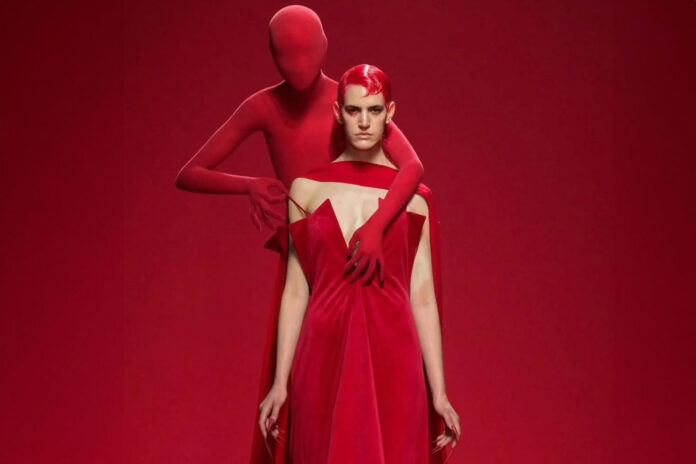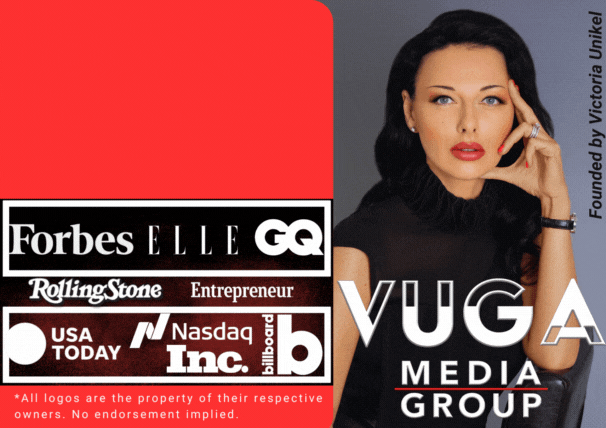Tradition, Artistry, and the Future of Haute Couture
Can luxury fashion adapt to sustainability and Gen Z’s values?
Paris Couture Week @pariscoutureweek should not only be seen as a runway event — it is the height of luxury, creativity and exclusivity. It is organized by the Fédération de la Haute Couture et de la Mode (FHCM), and this event happens twice a year and garners the interest of media outlets, celebrities, fashion lovers and some lucky individuals who are lucky enough to get the golden pass to the event. Not all is about the glitz and the glamour though, there is a story that comes along with such an event; a story that holds rules and traditions, as well as some controversy.
What is Haute Couture?
Haute couture, more than anything else, can be regarded as the inception giver of the luxury fashion market. It was a form of art and pioneering that had the fashion shows as its epicenter to agitate future markets. Nowadays, haute couture constitutes a strong focus on the brand image of the fashion house, emphasizing their artistry and international reputability.
Haute couture in a way assists in marketing ready-to-wear collections and cosmetics, eyeglasses, perfumes, and accessories in trying to target a bigger market, but it always aims in designing tailored clothes. However, in order to be classified as an haute couture, fashion designers are bound to certain standard operating procedures and specific codes.
The term Haute Couture is protected by French law, making it impossible for any brand to claim this title. To qualify, a fashion house must meet the following requirements set by the FHCM:
- Made-to-measure (Sur-mesure in French) designs tailored specifically for clients.
- A Paris-based atelier employing at least 20 full-time artisans and 20 full-time technical experts.
- Twice a year, in January and July, during the Paris Couture Week, showcase a selection of at least 25 unique creations per season.
These strict rules differentiate Haute Couture from prêt-à-porter and even Alta Moda in Italy, which, although luxurious, doesn’t have the same level of regulation or exclusivity.
Who Can Join the Federation?
The differences between guest, permanent and correspondent members.
The path to becoming a recognized Haute Couture brand is rigorous. Every year FHCM decides which fashion houses qualify as legitimate haute couture houses. A designer or company is not allowed to call their creations “Haute Couture” if they have not been officially awarded the Haute Couture title for the current year.
Designers can apply for one of three statuses:
Guest Members: To begin participating in haute couture, houses must first determine the status of guest members. Becoming a haute couture expert is a transitory stage.
Permanent Members: After four years, a house can become a permanent member. It is the member who actually gets the title of Haute Couture. These members are still listed in the official calendar like legendary French houses Chanel, Dior, and Givenchy, which have influenced the fashion world for decades.
Corresponding Members: International brands like Valentino and Fendi that adhere to the rules but are not headquartered in France.
The federation’s selection process is meticulous, ensuring that only those capable of upholding the artistry and tradition of Haute Couture are granted entry.
Embed from Getty ImagesThe History of Paris Couture Week
The history of couture week began somewhere in 1945, when the the FHCM began organizing fashion shows on a large scale in order to increase the country’s economy. However, this was not the first instance when fashion designers were showcasing their collections. One of the early instances took place in the 1850s when Charles Frederick Worth, father of Haute Couture, held the first fashion show by inviting rich clients to his atelier in Paris.
Paris couture week has also witnessed some of the most remarkable and controversial episodes in the history of fashion:
Spectacular shows:
- Maison Margiela Artisanal Spring 2024: Directed by John Galliano, this presentation enthralled viewers with porcelain doll-like models and makeup artist Pat McGrath’s glass-like skin effects. Many people complimented the collection’s elaborate decorations and theatricality.
- Chanel Spring 2009 Couture Collection: Karl Lagerfeld’s all-white collection, which debuted during an economic downturn, was hailed for its modernism and purity. The show demonstrated Lagerfeld’s ability to focus on a single subject with limitless expression, with elaborate paper headdresses and a “paper heaven” stage design.
- Jean Paul Gaultier x Simone Rocha Spring 2024: The aesthetics of both designers were harmoniously combined in Simone Rocha’s couture debut as Jean Paul Gaultier’s guest designer. The collection, which was praised for its inventiveness and drama, included reworked classic pieces like the cone bra and disassembled sailor outfits.
Controversies:
- And the works of John Galliano for Dior in the 2000s, if remarkable, sometimes did not respect the line of several cultures and became the cause of discussions about the beauty of tolerance.
- Balenciaga Spring 2024 Couture: criticized for lacking the classic elegance of haute couture, Demna’s effort to turn ordinary streetwear into high fashion couture was criticized. Some people felt that the collection’s usage of jeans and hoodies compromised the exclusivity and workmanship that were expecting at such a renowned occasion.
- The spring 2024 collection by Juana Martín, which was inspired by Andalusian motifs, was condemned by certain fashion experts for lacking the delicacy and refinement that is characteristic of couture and for being unduly theatrical and costume-like.
The Exclusivity of Invitations
Attending a show during the Paris Couture Week may be impossible for some, as tickets cannot be purchased through legally. The only way to attend is if one gets invited. Brands have full control over their guest lists, sending invitations only to individuals they wish to see at their shows.
The invites themselves frequently serve as collectibles; Schiaparelli’s gold key-shaped invitations and Chanel once sent custom-painted miniature canvases, while Dior has used handcrafted leather envelopes.
How to get invited to Paris Couture Week?
How does one become an invitee?
While legally purchasing invitations is out of the question, there are ways for fashion enthusiasts to increase their chances of attending:
Work in the Industry: The guest list frequently includes editors, buyers, and influencers with significant number of social media followers.
Collaborate with a Brand: Becoming a brand ambassador or establishing a professional relationship with a couture house can open doors.
Become a Volunteer: There is also a chance to participate in the desired show by volunteering. Often, volunteering at a fashion show involves serving as a backstage dresser, where your major task is to assist models with their clothing.
In addition to dressing models, volunteers do a variety of practical activities, including: Unpacking and arranging clothing on hangers, ironing clothing, helping set up the area for the event, running errands in support of the team and so on.
Embed from Getty ImagesJoin Accredited Media: Writers, photographers, and videographers can be accredited for press passes through the FHCM’s official accreditation process.
For official accreditation details, visit the FHCM’s website and apply ahead of the event.
Goodie bags
Beyond the catwalk, attendees of fashion shows are frequently given gift bags that contain a variety of items, such as tailored accessories, high-end skincare products, unique jewelry, and even personalized fragrances. Hand-signed drawings of their designs have been offered as mementos by several manufacturers, like as Valentino.
Embed from Getty ImagesThe Difficulties Haute Couture Faces
As the world shifts toward sustainability and minimalism, the relevancy of Haute Couture is being questioned.
Generation Z’s Minimalism: For a generation more concerned with practicalities and ethics, the attraction of custom-made luxury clothing may appear antiquated.
The Sustainability Issue: On one hand, luxury brands respond with value-claiming rhetoric of sustainability while at the same time being heavily criticized for the annihilation of unsold stock, offshoring, or overproduction of seasonal ranges.
Are these the challenges which The Haute Couture is withstanding or it is in the grave danger of becoming an extinct fashion within the millennium?
On one hand, luxury brands respond with value-claiming rhetoric of sustainability while at the same time being heavily criticized for the destruction of unsold stock, offshoring, outsourcing to low-wage labor markets, or overproduction of seasonal collections.
Is Haute Couture adapting to these challenges, or is it at risk of becoming a relic of the past?
The Paris Couture Week is nothing but proof of art and history but the bigger question is, will it persist with the ethical consumerism in today’s world? When looking at high end brands, is there really an option to think about sustainability alongside exclusivity?
Such questions continue to be the main highlight as we make our way to the next upcoming Haute Couture Week Spring/Summer 2025, which takes place from Monday 27th January to Thursday 30th January 2025. To see the full schedule of shows, you can check the FHCM’s website.
What do you think? In your opinion, will Haute Couture stand a chance of surviving in a world which has become more demanding in terms of transparency and responsibility?
We will, of course, bring you exclusive coverage of the most spectacular shows from Couture Week.
Haute Couture is not fashion—it’s art that lives on a runway.




